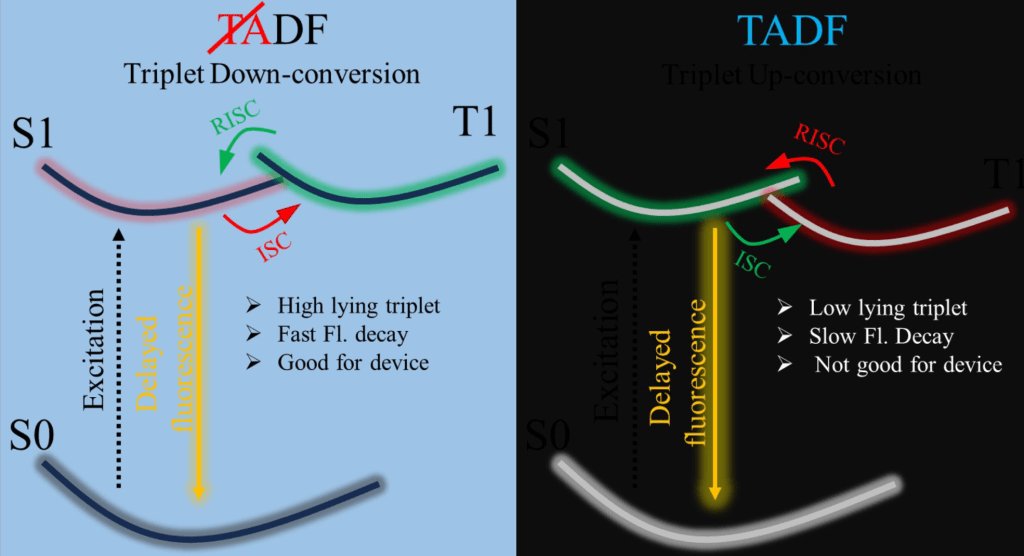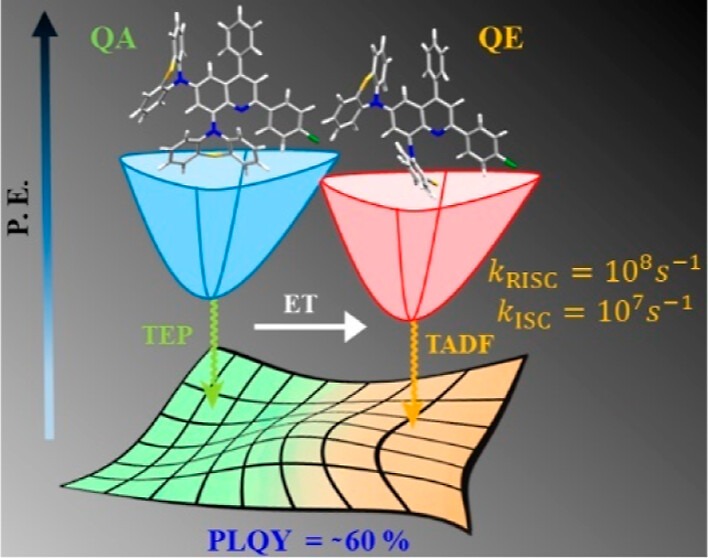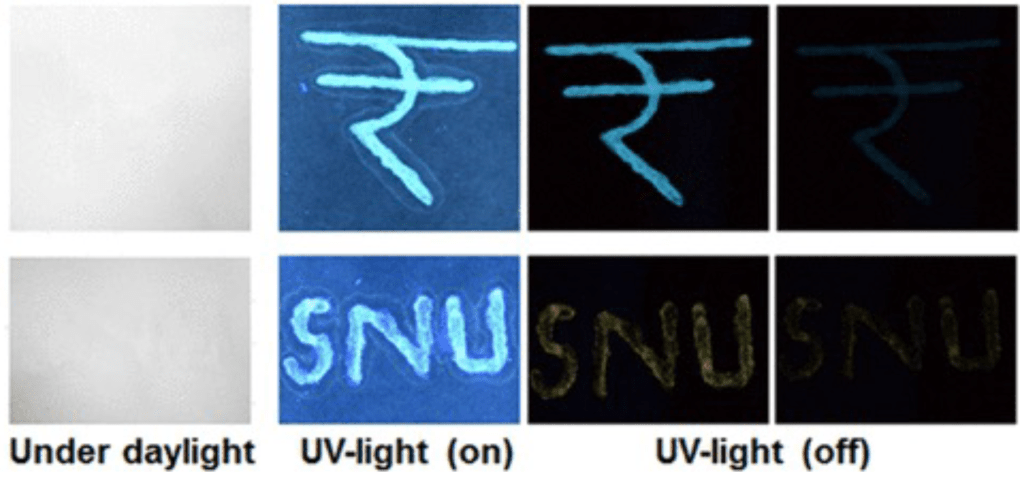Delayed Emitters
Endothermic Emitter (TADF)
Within our group, we lead in designing and synthesizing novel TADF emitters. By manipulating molecular structures and electronic configurations, we aim to optimize the efficiency of TADF processes. Our research includes exploring new chromophores, molecular architectures, and donor-acceptor systems. This work unlocks the full potential of TADF emitters, paving the way for energy-efficient and sustainable solutions.
Exothermic DF Emitter (EXDF)
Our group also focuses on achieving energy inversion of the lowest singlet and triplet states to develop Exothermic Delayed Fluorescence (EXDF) emitters with exothermic reverse intersystem crossing (EXRISC). While TADF eliminates metal dependence in OLEDs, TADF emitters face efficiency challenges due to competing processes such as bimolecular annihilations. By inverting the singlet-triplet energy gap, we aim to enhance the thermodynamically allowed down-conversion from T1 to S1. We are currently designing emitters to explore the future potential of these molecules.

Ambient Phosphorescence
In our pursuit of materials capable of Room Temperature Phosphorescence (RTP), we engage in the design and synthesis of organic molecules and polymers. By meticulously controlling molecular structures and employing sophisticated design strategies, we aim to create materials that demonstrate persistent phosphorescence under ambient conditions. The applications of RTP emitters are extensive, encompassing various fields such as novel lighting technologies, security inks, and advanced sensing devices.


